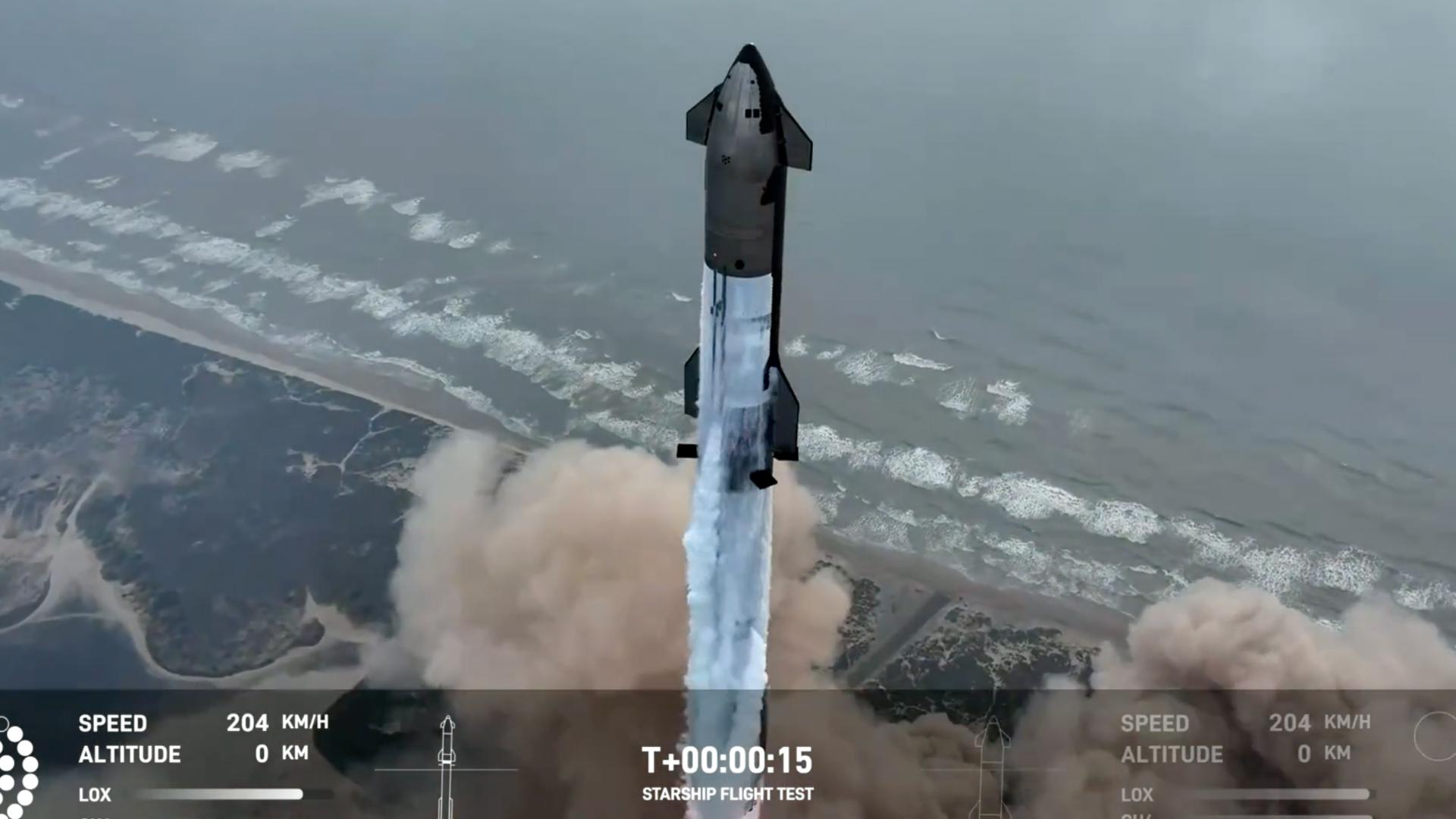BOCA CHICA, Texas — SpaceX’s mega Starship rocket blasted off from Texas on Thursday, the fourth test flight for the spaceship that NASA and Elon Musk are counting on to get humanity to the moon and Mars.
The world’s largest and most powerful rocket — almost 400 feet (121 meters) tall — was empty as it soared above the Gulf of Mexico and headed east on a planned hourlong flight. The spacecraft on top was aiming for a half-lap around the planet with a splashdown in the Indian Ocean.
SpaceX was looking to avoid explosions this time by controlling the descents. Minutes after Thursday morning's liftoff, the first-stage booster separated from the spacecraft and splashed into the gulf precisely as planned, after firing its engines.
“And we have splashdown!” SpaceX launch commentator Kate Tice announced from Mission Control at company headquarters in California.
It was a critical milestone in the company's plan to eventually return Starship’s Super Heavy booster to its launch site for reuse.
SpaceX came close to avoiding explosion in March, but lost contact with the spacecraft as it careened out of space and blew up short of its goal. The booster also ruptured in flight, a quarter-mile above the gulf.
Last year’s two test flights ended in explosions shortly after blasting off from the southern tip of Texas near the Mexican border. The first one cratered the pad at Boca Chica Beach and hurled debris for thousands of feet (meters).
SpaceX upgraded the software and made some rocket-flyback changes to improve the odds. The Federal Aviation Administration signed off Tuesday on this fourth demo, saying all safety requirements had been met.
Starship is designed to be fully reusable. That’s why SpaceX wants to control the booster’s entry into the gulf and the spacecraft’s descent into the Indian Ocean — it’s intended as practice for planned future landings. Nothing is being recovered from Thursday’s flight.
NASA has ordered a pair of Starships for two moon-landing missions by astronauts, on tap for later this decade. Each moon crew will rely on NASA’s own rocket and capsule to leave Earth, but meet up with Starship in lunar orbit for the ride down to the surface.
SpaceX already is selling tourist trips around the moon. The first private lunar customer, a Japanese tycoon, pulled out of the trip with his entourage last week, citing the oft-delayed schedule.
SpaceX’s founder and CEO has grander plans: Musk envisions fleets of Starships launching people and the infrastructure necessary to build a city on Mars.
___
The Associated Press Health and Science Department receives support from the Howard Hughes Medical Institute’s Science and Educational Media Group. The AP is solely responsible for all content.

